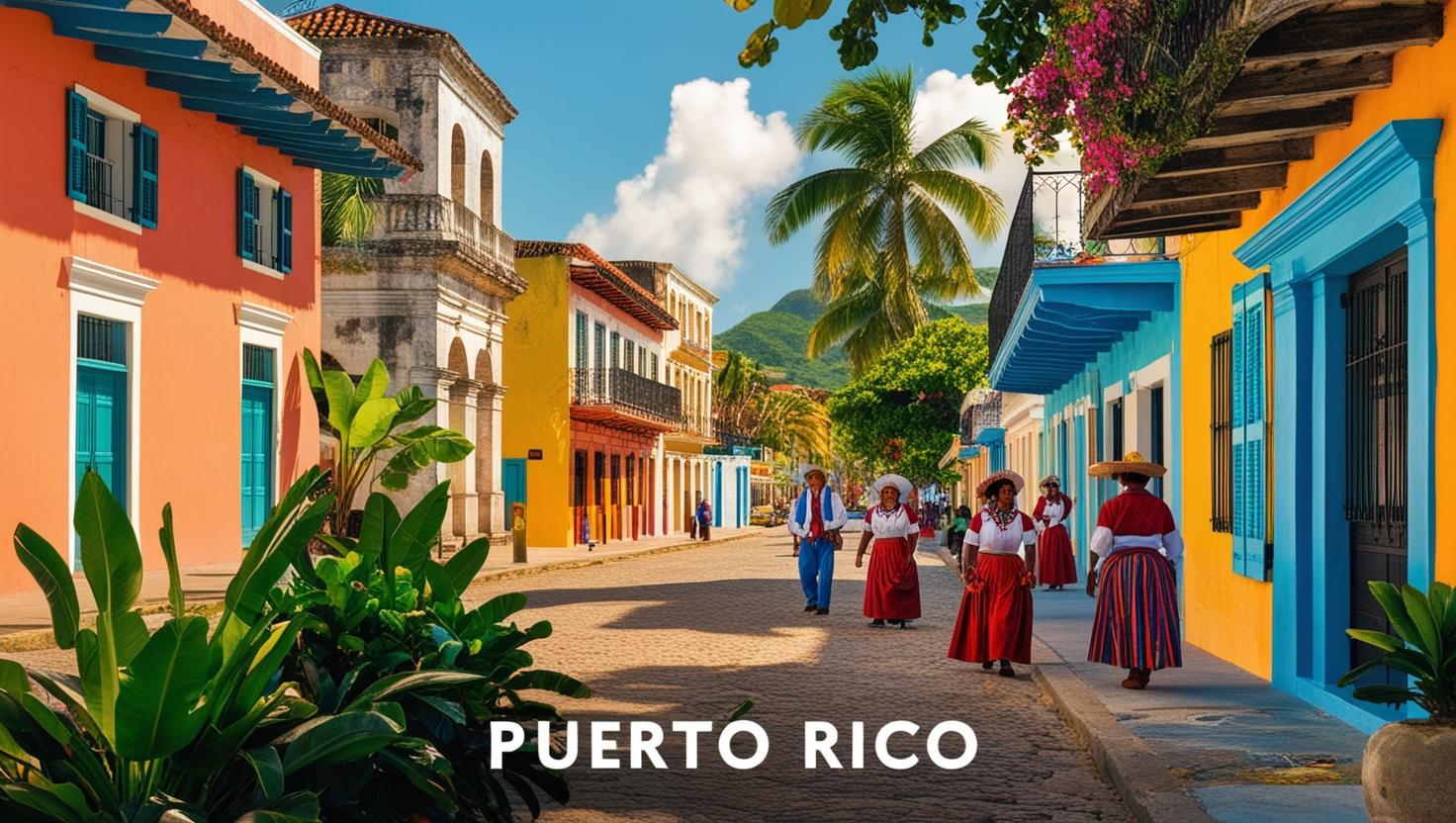Puerto Rico is a very interesting place with a mix of old history, lively culture, and amazing natural beauty. It is a U.S. territory in the Caribbean Sea. The island offers both modern and traditional experiences that amaze visitors and locals. Let’s explore this wonderful island by learning about its land, history, culture, and more.
Geography: The Land and Its Features
Puerto Rico is the smallest island in the Greater Antilles group, which includes Cuba, Hispaniola, and Jamaica. The main island is surrounded by smaller ones like Vieques, Culebra, and Mona. The size of Puerto Rico is about 3,500 square miles. It has many different landscapes, from the green rainforests of El Yunque to the dry, cactus-filled areas in the southwest.
The central mountains, called the Cordillera Central, run across the island. These mountains give cool weather and great views. The flat land near the coast is good for farming and building cities. Because it is in the Caribbean, Puerto Rico gets hurricanes, but it also has warm tropical weather all year.
A Look at Puerto Rico’s History
The First People
Long before Europeans came, the Taíno people lived in Puerto Rico. They had their own culture and way of life. They called the island “Borikén,” which means “Land of the Brave Lord.” You can still find signs of their life in old sites and traditions.
The Spanish Arrive
Christopher Columbus came to Puerto Rico in 1493 on his second trip to the Americas. The Spanish took over the island and ruled it for more than 400 years. During this time, the Spanish brought Christianity, built European-style buildings, and started farming with enslaved workers. San Juan, the capital, became an important place for trade and defense. You can still visit forts like El Morro and San Cristóbal which were built in this period.
Becoming a U.S. Territory
In 1898, the Spanish-American War ended, and Puerto Rico became part of the United States. In 1900, the Foraker Act set up a government for the island. By 1917, Puerto Ricans were U.S. citizens. Even today, people talk about whether Puerto Rico should become a state, stay as it is, or become independent.
Lively Culture: A Mix of Influences
Puerto Rico’s culture is a mix of Taíno, Spanish, African, and American traditions. You can see this mix in the music, dances, food, and festivals.
Music and Dance
Puerto Rico is where reggaeton music started. Famous artists like Bad Bunny and Daddy Yankee made this music popular around the world. Other types of music, like salsa, bomba, and plena, are also very important. Bomba is a lively dance with African roots and Plena shares stories of daily life on the island.
Food
Puerto Rican food is full of flavor. Popular dishes include mofongo (mashed plantains with garlic and pork), arroz con gandules (rice with pigeon peas), and pasteles (similar to tamales but wrapped in banana leaves). Sweet treats like flan and tembleque are also loved. On my visit, I tried lechón asado (roast pork) from a small food stand, and it tasted amazing.
Festivals and Traditions
There are many festivals in Puerto Rico. The San Sebastián Street Festival in Old San Juan is one of the biggest. It has parades, music, and art. Christmas is a special time, too. People celebrate with parranda, where groups go to different houses singing songs and spreading cheer.
Natural Wonders: Discovering Puerto Rico’s Beauty
Beaches
Puerto Rico has more than 300 miles of beaches. Flamenco Beach in Culebra is one of the best in the world. Luquillo Beach is great for families. In Rincon, surfers enjoy the big waves.
Rainforests and Parks
El Yunque National Forest is very special. It is the only tropical rainforest in the U.S. National Forest System. You can see rare plants and animals there, like the coquí, a small frog that is a symbol of Puerto Rico. Walking in El Yunque gives you waterfalls and amazing views.
Bioluminescent Bays
Puerto Rico has three glowing bays. These bays light up because of the tiny creatures in the water. Mosquito Bay in Vieques shines the brightest. Visitors often kayak there to see the magical glow.
Economy and Modern Life
Puerto Rico’s economy has many parts, including tourism, factories, and farming. The island is famous for making rum, medicine, and electronics. However, Puerto Rico has money problems, including high debt and a complicated relationship with the U.S. government.
Cities like San Juan are full of modern life. You can find malls, restaurants, and places to have fun. The countryside is quieter and keeps old traditions alive.
Language and Identity
Spanish and English are the official languages in Puerto Rico, but most people speak Spanish. The island’s culture mixes Caribbean and American styles. You can see this mix in art, writing, and everyday life. This makes Puerto Rico a special place that feels both traditional and modern.
Challenges and Strength
Puerto Rico has faced hard times. Hurricane Maria in 2017 caused great damage. People came together to rebuild. Local groups, community projects, and help from other countries made recovery possible.
The island’s political future is also a challenge. Some people want Puerto Rico to become a U.S. state. Others prefer independence or keeping the current setup. These choices affect Puerto Rico’s future and its people’s identity.
Puerto Rico’s Lasting Charm
Puerto Rico’s beautiful nature, rich culture, and deep history make it a very special place. From sunny beaches to fun festivals, there is something for everyone. Whether it is the music, food, or landscapes, Puerto Rico leaves a strong memory for all who visit.
